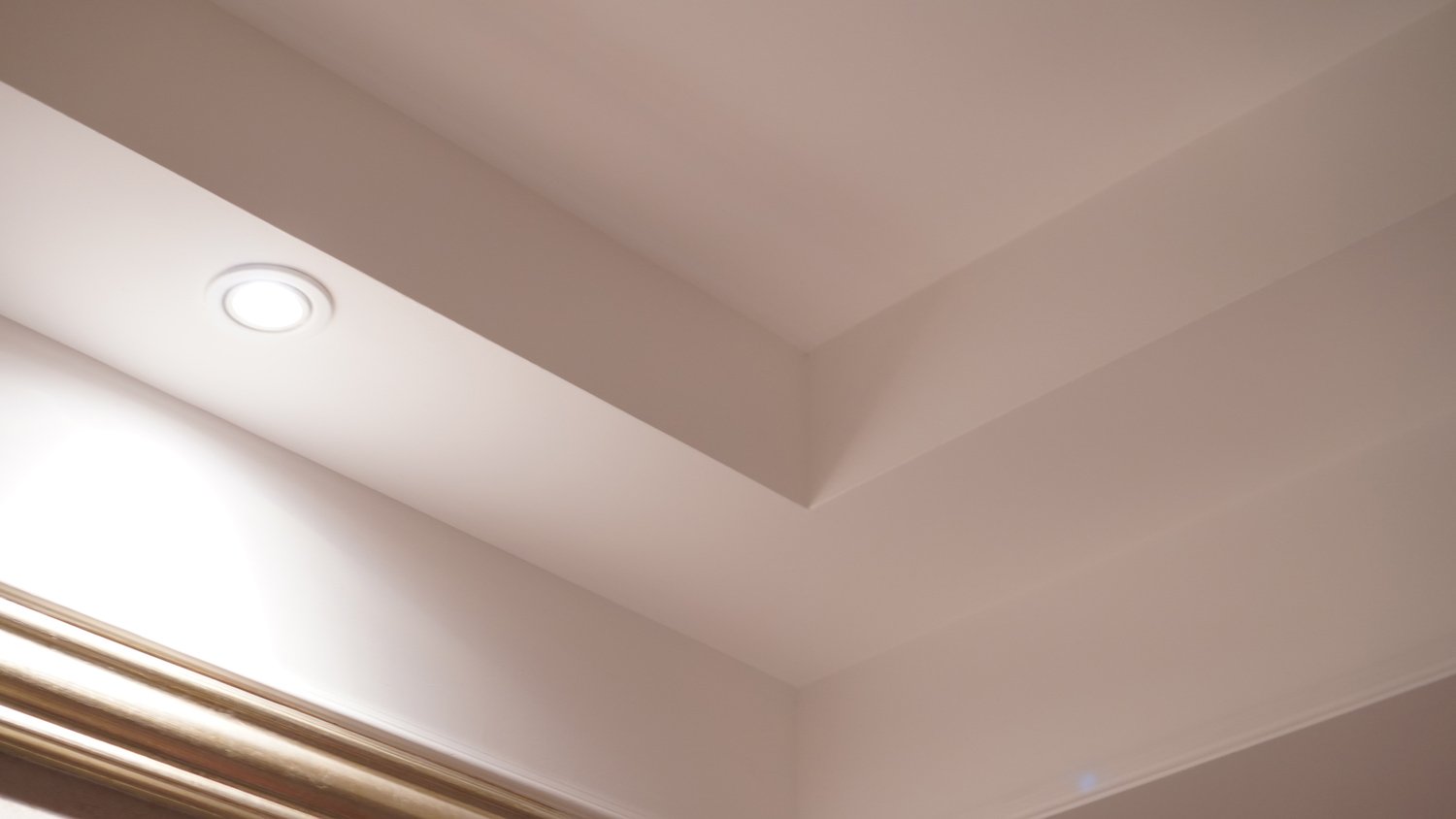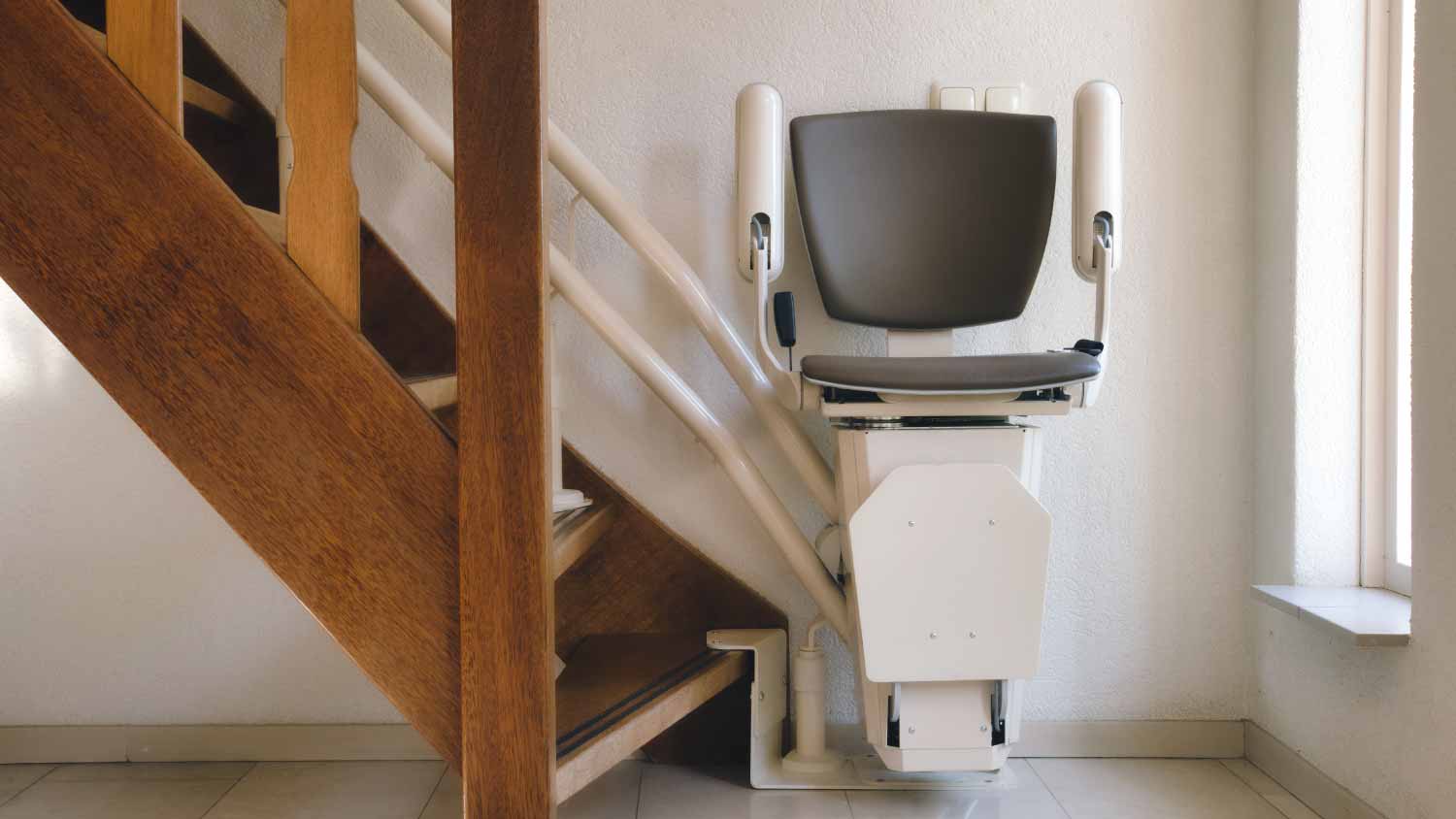
The cost to install a tongue and groove ceiling depends on the size of the space and the cost of labor. This guide can help you price out your remodel.
Time to elevate your ceiling design knowledge


Coffered ceilings have been around since Ancient Greece, historically used to support domed ceilings.
Tray ceilings are a newer design, meant to be a less-expensive alternative to coffered ceilings.
Coffered ceilings have multiple recessed areas, while tray ceilings have just one recessed area.
Coffered ceilings can cost $10–$40 per square foot, significantly more expensive than tray ceilings.
The ceilings in your home can be conventional and flat, or you can elevate your space with a unique ceiling design that adds both flair and includes functional benefits, such as improved acoustics. Coffered and tray ceilings are two popular options for decorative ceilings, but what sets them apart? We've highlighted the key features of each style to help you choose the best fit for your home, design preferences, and budget.
While coffered ceilings and tray ceilings are sometimes used interchangeably, they are distinct in appearance and intended architectural function. Take a closer look at what sets these ceiling styles apart to choose the best option for your home.
| Type of Difference | Coffered Ceilings | Tray Ceilings |
|---|---|---|
| Recessed areas | Several | Just one |
| Materials | Many options, but typically wood | Often plaster and drywall |
| Design function | Personal, intimate feel | Grand, open architectural look |
| Ideal rooms | Kitchens, living rooms, dens | Dining rooms, entryways |
| Cost | $10–$40 per square foot | $3–$7 per square foot |

While tray ceilings are sometimes thought of as wallet-friendly alternatives to coffered ceilings, these styles have significant differences that can change the look and feel of the rooms they are installed in.
Coffered ceilings have multiple recessed areas, while tray ceilings just have one. Originally, coffered ceilings were used in Ancient Greece and Ancient Rome to support domed ceilings with additional beams. Tray ceilings, however, became more popular in the late 1990s and early 2000s as a less expensive alternative to coffered ceilings.
Coffered ceilings are used in rooms where you want to create an intimate atmosphere; they can break up an interior space and improve a room’s acoustics. That said, they can make a ceiling seem heavy and low, so they are best used in rooms with very high ceilings.
Tray ceilings, by comparison, offer a grandiose architectural style and work to open up a room and make it appear larger. These ceilings can also be a smart way to hide the addition of a vent system in older homes—many use the perimeter of the tray ceiling as a way to hide wires or plumbing.
These ceiling styles often use different materials. Tray ceilings are almost always wrapped in drywall and plaster and finished with crown molding. Coffered ceilings are typically made with wood, steel, or glass. The beams of a coffered ceiling can be “faux beams,” which is a lightweight material such as plaster or Styrofoam. “Functional beams” are made from real wood to add support to the ceiling.
The cost of coffered ceilings is much more expensive than that of tray ceilings, as they require more materials and additional hours of labor. While the final price will depend on the materials used, the size of the ceiling, and optional features such as lighting, expect to spend $3–$7 per square foot for a tray ceiling and $10–$40 per square foot for a coffered ceiling. To get the most accurate quote for your ceiling design, contact a ceiling company near you.
From average costs to expert advice, get all the answers you need to get your job done.

The cost to install a tongue and groove ceiling depends on the size of the space and the cost of labor. This guide can help you price out your remodel.

The cost to frame a house can vary depending on the size of your home, the structure you’re building, and your materials. Keep reading to learn how much framing your house might cost.

Strong floor joists are the key to a structurally safe home. The cost of floor joist repair will often come down to what is causing the problem.

If a disappearing contractor left you without your deposit and services, here are the actions to take to remediate the project and get your money back.

A home improvement project is exciting and stressful, but the right contractor can simplify the process. Learn how to hire a contractor to help bring your dreams to life.

Have stair lift questions? Before installing or replacing a stair lift, discuss these key questions with your contractor to ensure a smooth and safe project.